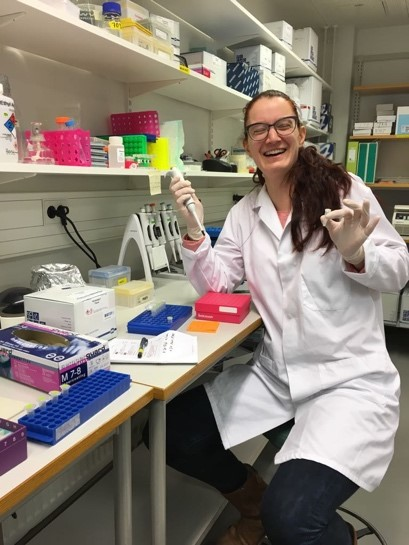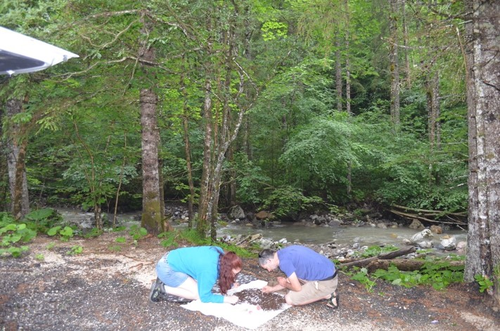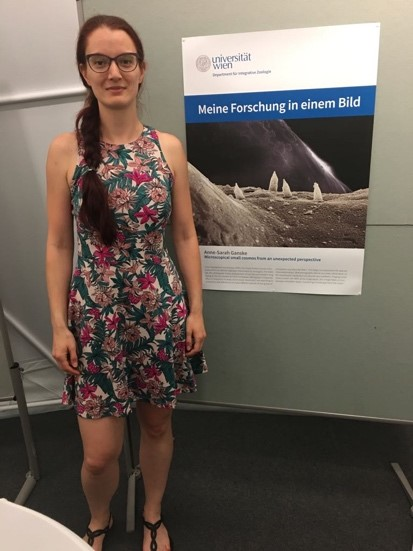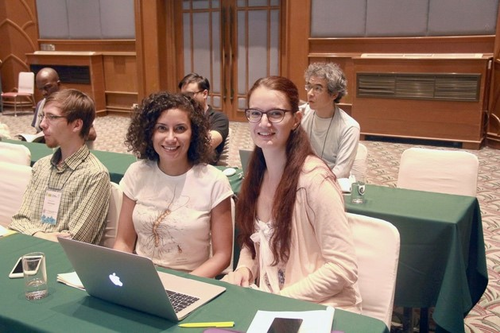 The main goal of our BIG4 project is to shed light on the phylogeny of the species-rich genus Lithobius Leach, 1814, which belongs to the centipedes (Myriapoda). On the pursuit of this mission, we are searching for new morphological characters and acquiring molecular data from representatives of the genus Lithobius and other Lithobiidae mainly from the European continent.
The main goal of our BIG4 project is to shed light on the phylogeny of the species-rich genus Lithobius Leach, 1814, which belongs to the centipedes (Myriapoda). On the pursuit of this mission, we are searching for new morphological characters and acquiring molecular data from representatives of the genus Lithobius and other Lithobiidae mainly from the European continent.One achievement in this project is the generation of a morphological character matrix with information from an existing set of characters and new information based on scanning electron microscopic data obtained from mouth parts of the centipedes. The first step towards obtaining this information, was the dissection of the mouth parts from the head of the animal. The structures are tiny, measuring just some hundred micrometers, and calm hands were essential to handle the samples before observing them with the microscope. Afterwards, the comparison and evaluation of the structures between the examined species was the next step to describe new characters and establish a matrix for following phylogenetic analyses. Preliminary analyses of the morphological matrix are at hand and provide a first overview on the species interrelationships of the genus resolving it non-monophyletic.
A second milestone is the acquisition of sequence data of four genes from freshly collected centipede material (e.g. from excursions in Carinthia, Austria and La Palma, Spain). During a five-week long research stay in the Zoological Museum at the University of Turku (Finland), I learned how to extract DNA from centipedes, how to compile polymerase chain reactions for gene amplification, how to edit and align the obtained sequences and how to analyze those molecular data sets. The acquisition of sequences continued at the University of Vienna (Department of Integrative Zoology) and is now finished. The analysis of the molecular data sets is ongoing, also in combination with the morphological data mentioned earlier.

Collecting centipedes together with Dr. László Dányi from the Hungarian Natural History Museum Budapest during a field trip in Carinthia, Austria.
Besides the pure research, the popular science and outreach aspect were also present. That is why I participated in a photo competition called "My research in one picture" at the University of Vienna, Austria. It was requested to present my research in one image together with an abstract of my work. Honestly, it was a challenging experience to extract data and make it accessible to the broader audience. The result was rewarding as my image was among the ten finalists. Furthermore, some of the SEM-images inspired us to write an article in the popular magazine UNIVERSUM (in press) showcasing that images taken for scientific purposes may fringe broader aspects and even art.

Presenting the SEM-image for "My research in one picture" at the University of Vienna, Austria
BIG4 enabled me to participate in international meetings and organize workshops, which made me realise that research is sustainable. It also enabled me to develop nice collaborations, which will hopefully continue after the project. I worked in stimulating scientific environments with experts in the field of centipede research and learned new methods and strengthened my methodological skills.
BIG4 also made it possible for me to dive into different biological fields like taxonomy, systematics, phylogeny, morphology, evolutionary and molecular biology and to combine those in different aspects. During these international meetings and events, I took the chance to compete with my peer colleagues from other institutes and was honored with a poster prize during the International Congress of Myriapodology in Thailand and the "Carl-von-Schreibers-Forschungspreis" (neugier!wissen!schafft!) for the best poster at the NHM-Vienna. Lately, I was awarded with a research grant from the Network of Biological Systematics Austria (NOBIS).

My supervisor Dr. Nesrine Akkari and me at the International Congress of Myriapodology in Krabi, Thailand.
Publications within the project:
- Ganske A-S, Edgecombe GD, Akkari N (2018). The peristomatic structures as a source of systematic characters in the genus Lithobius Leach, 1814 (Myriapoda, Chilopoda). In: Stoev P, Edgecombe GD (Eds) Proceedings of the 17th International Congress of Myriapodology, Krabi, Thailand. ZooKeys 741: 49-75. https://doi.org/10.3897/zookeys.741.21706
- Akkari N, Ganske A-S (2018). Two centipedes new to the fauna of La Palma (Canary Islands, Spain) and notes on the Lithobiomorpha of the island (Chilopoda, Myriapoda). Biodiversity Data Journal 6: e26746. https://doi.org/10.3897/BDJ.6.e26746
- Akkari N, Ganske A-S, Komerički A, Metscher B (2018). New avatars for Myriapods: Complete 3D morphology of type specimens transcends conventional species description (Myriapoda, Chilopoda). PLOS ONE 13(7): e0200158. https://doi.org/10.1371/journal.pone.0200158
- Ganske A-S, Akkari N (in press). Auf der Schwelle zur Kunst – wie wissenschaftliche Bildgebung versteckte Schönheiten offenbart. UNIVERSUM Magazin, Das Naturhistorische, Krems/Wien, Austria.

